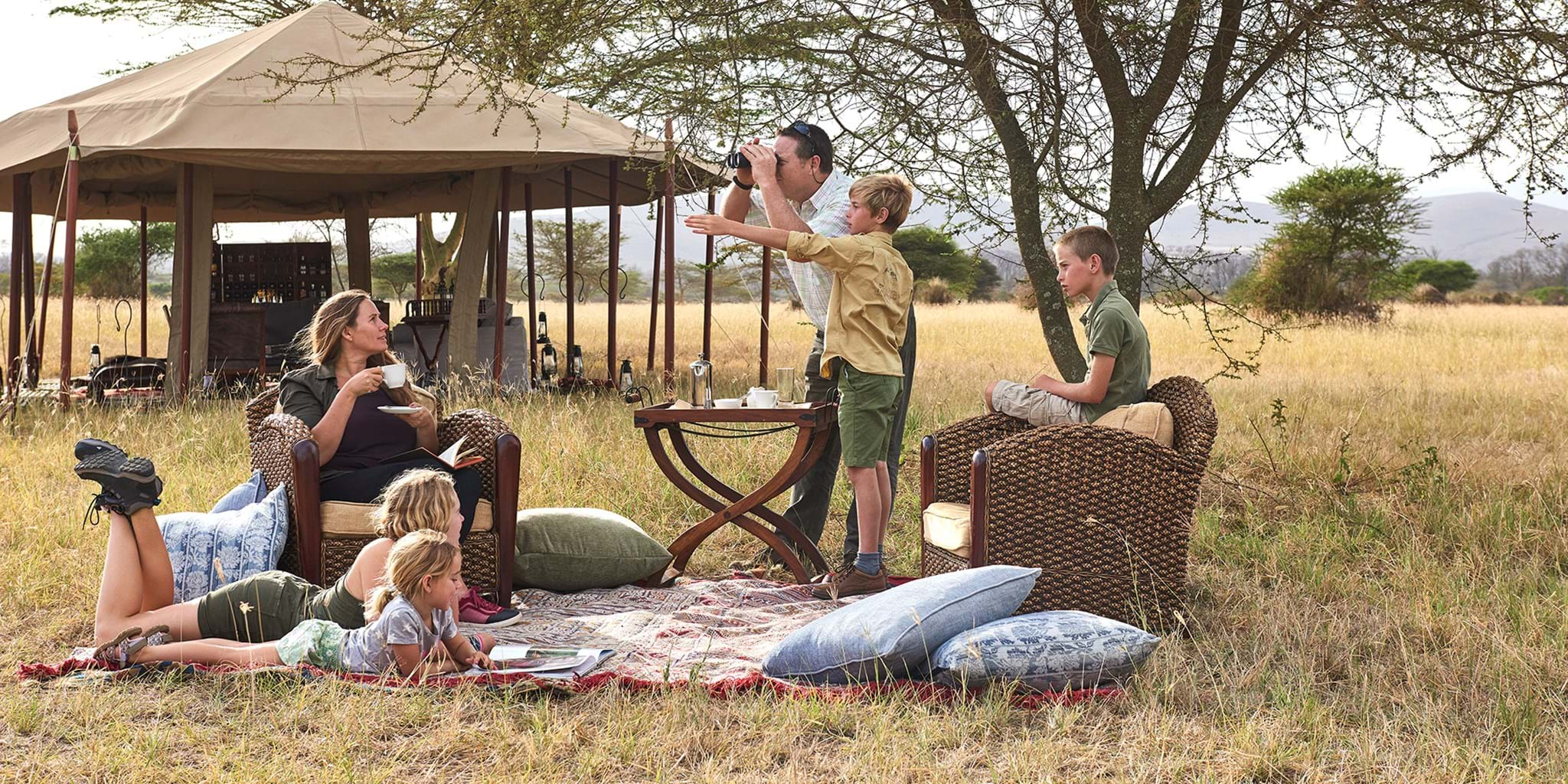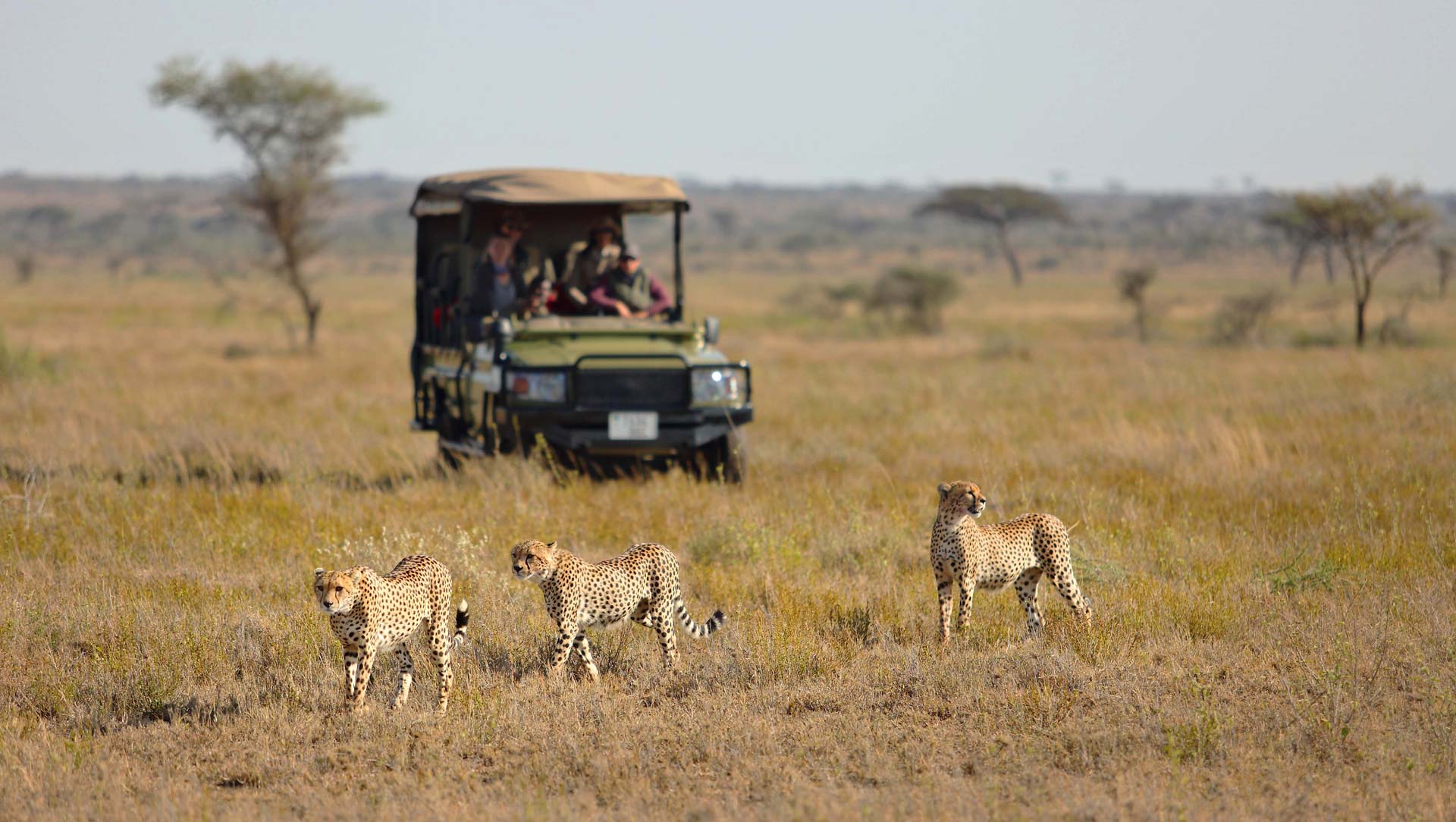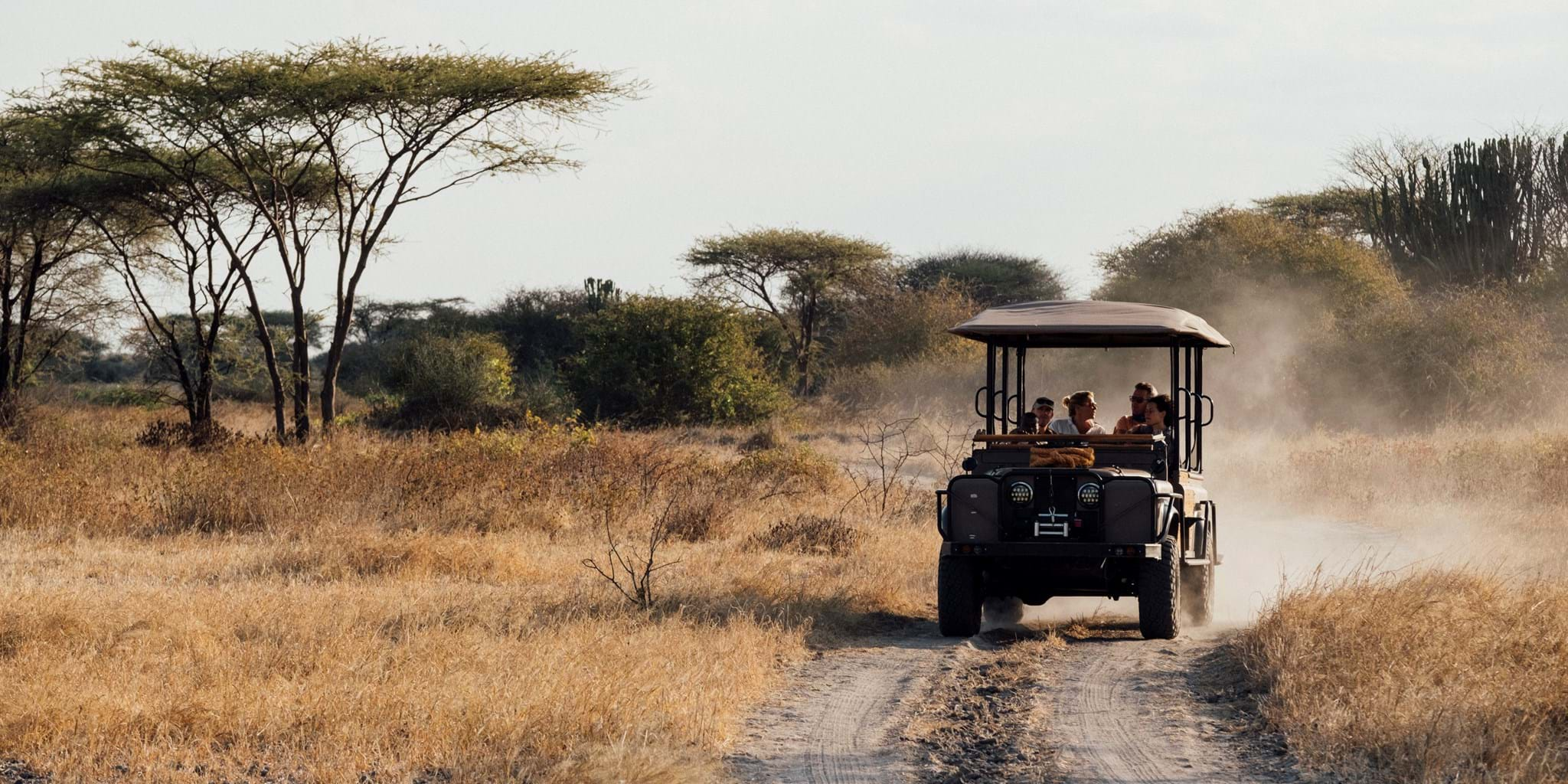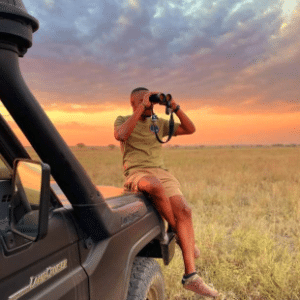Home » Travel to Tanzania
At Great Image Expedition, we are dedicated to offering our clients unbiased advice and unforgettable Tanzania safari experiences. Our Tanzania Safari Experts are permanently based in Tanzania, well-travelled, and possess extensive first-hand knowledge of the destinations they recommend. They frequently inspect new lodges, experiences, and activities to ensure these offerings meet our clients’ expectations.
There’s nothing like up-to-date, relevant travel information direct from someone who’s been there.
If witnessing the Wildebeest Migration or enjoying the best beach weather in Zanzibar is on your bucket list, ensure your itinerary aligns with your travel goals.
Tanzania’s popular safari destinations and prime camps at Wildebeest Migration hotspots are in high demand and often booked a year in advance during peak season.
While morning and afternoon game drives are standard, special excursions like night games, guided bush walks, and hot-air balloon safaris are only available in certain areas or camps.
Tanzania’s major national parks, such as the Serengeti, Ngorongoro Crater, Lake Manyara, and Tarangire, can get quite crowded from June to October. To avoid the masses and enjoy excellent game viewing, consider visiting during the low or Green Season, which runs from about November to March.
For exclusivity, opt for one of Tanzania’s private reserves. These offer superb accommodations, excellent game viewing comparable to the main parks, and, occasionally, additional safari activities (see above).
Experience the wonders of Tanzania with the Great Image Expedition for an unforgettable safari adventure.

Tanzania Safari Travel Advice. Tanzania’s currency unit is the Tanzanian Shilling, but we recommend using US Dollars exclusively – and in cash. While credit cards and traveller’s cheques are accepted in most establishments, they often incur transaction fees. ATMs are available throughout major towns and cities in Tanzania but not in the national parks and game reserves.
Note: US Dollar bills printed before 2006 are not accepted in Tanzania.
Tipping lodge staff and drivers/guides for exemplary service on a Tanzania safari is customary. However, always check if a service charge has already been added to your bill. Tipping is additional to the quoted price from your operator, and the amount can vary based on your group size, the luxury level of the safari, and the quality of service received. In major Tanzanian cities, a 10% tip is customary in restaurants and bars if a service charge is not included.
For more detailed guidelines on tipping in Tanzania or for personalized advice, contact one of our Great Image Expedition Safari Experts.
| eason | Months | Average Temperatures |
|---|---|---|
| Long Rains | April to May | 72–81°F (22–27°C) |
| Short Rains | November to December | 81–86°F (27–30°C) |
| Long Dry | June to October | 70–81°F (21–27°C) |
| Short Dry | January to March | 84°F (29°C) |
This table summarizes Tanzania’s seasons along with the corresponding months and average temperatures in both Fahrenheit and Celsius.

When packing for your Tanzania safari, light casual clothing in practical, neutral colours and a warm jacket for evening game drives are a safe bet throughout the year. For more on what to pack for a safari, refer to our Great Image Expedition Safari Guide.
When visiting Zanzibar, women must dress modestly in main towns out of respect for Muslim cultural beliefs. T-shirts that cover the shoulders, long skirts, and capri pants are generally better options than tank tops and shorts. Beachwear and bathing costumes are acceptable on the beaches and in resorts.

Religious belief is firm in Tanzania, with Christianity and Islam being the predominant faiths. Most Muslims reside along the coast and in Zanzibar. Visitors should be mindful of the conservative nature of these areas—mainly Stone Town—and dress and act respectfully.
Tanzanians are known for their friendliness and harmony, but it is polite to ask for permission before taking photographs of people.

Kilimanjaro International Airport – Tanzania’s second international airport – serves the Serengeti, Ngorongoro Crater, Tarangire, and Lake Manyara. However, to reach these safari destinations, you must transfer to nearby Arusha Airport for charter flights. Since international flights often arrive at Kilimanjaro Airport late in the day, an overnight stay in Arusha is usually necessary.
Dar-es-Salaam International Airport—Tanzania’s main airport—is the gateway to the Indian Ocean coast, Zanzibar, Nyerere National Park (previously Selous), and Ruaha National Park.
Arusha Airport—the gateway to northern Tanzania’s safari airstrips—is about 30 kilometres (18.5 miles) from Kilimanjaro International Airport.
Did you know you can book your flights through Great Image Expedition? For more information and frequently asked questions, please see our Flights page.
Guided road transfers and game drives in Tanzania are conducted in closed 4x4s with big windows and pop-up roofs. Visitors to destinations like Mahale will enjoy a boat transfer across Lake Tanganyika. Most safari destinations have extensive road networks, so closed vehicles are the norm for long-distance road transfers between airstrips, camps, and lodges in Tanzania. A closed 4×4 game drive vehicle generally has three rows of seating and features a pop-up roof hatch that can be raised for game viewing and taking photographs.

Almost all visitors to Tanzania require a visa. It is essential to contact the relevant issuing authorities well in advance (ideally, several months before your trip) to confirm the entry requirements for Tanzania and to arrange the necessary permits and visas. We strongly recommend that all clients entering Tanzania via Kilimanjaro International Airport obtain their visas online through the Tanzania Immigration Department before arriving there. E-visas can take 2 to 3 weeks to be issued.
Visitors to Tanzania must have a passport valid for at least six months beyond the initial travel date.

Tanzania’s history reflects the story of humankind. Fossils at Olduvai Gorge, a world-famous archaeological site, indicate hominids settled here over 2 million years ago. Iron Age migrations from West Africa brought new cultures, followed by European and Arabian merchants, missionaries, and slavers. By the mid-1800s, Zanzibar had become the center of the East African slave trade. Colonized by Germans and later the British, mainland Tanganyika gained independence peacefully in 1961. Zanzibar joined in 1964, forming modern Tanzania.
Despite its mineral wealth and natural gas, Tanzania’s economy relies heavily on agriculture. This sector employs 75% of the workforce and contributes half of the GDP. Main exports include gold, coffee, tea, and cotton. Tourism, however, is now the largest foreign exchange earner and continues to grow each year.
Tanzania is home to about 120 ethnic groups, along with notable communities of Asians, Arabs, and Europeans. Despite this diversity, the nation promotes a culture of harmony built on respect and courtesy. Swahili and English are the official languages.
Tanzania’s central plateau lies between the two arms of the Great Rift Valley. The west features Africa’s Great Lakes, while the north is dominated by mountains, including Kilimanjaro, the continent’s tallest peak. The east opens to the Indian Ocean. Most of the landscape consists of grasslands, woodlands, and savannah, with rainforests found in remote mountain ranges.
The country hosts 20% of Africa’s large mammals, making it one of the top game-viewing destinations. Over 25% of Tanzania is dedicated to conservation, with some of its reserves among the world’s largest. Most tourists visit northern Tanzania for its famous reserves. However, southern and central regions offer vast, unspoiled savannahs and rainforests, perfect for off-the-beaten-track safaris.
Discover Tanzania’s wonders with Great Image Expedition.
